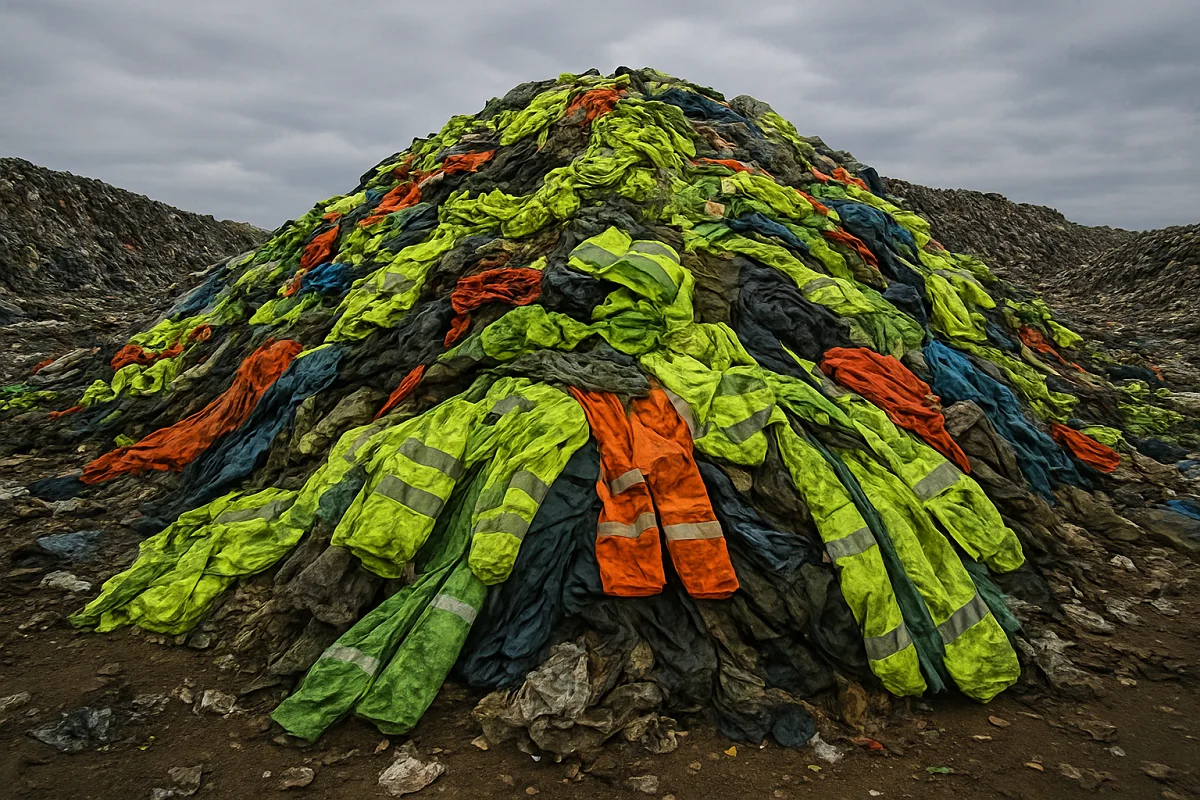Why is textile waste a problem?
The textile industry is one of the
largest polluters in the world. Every year, around
92 million tonnes of textile waste is generated globally — equal to a garbage truck of clothes being dumped every second. If no action is taken, this number will rise to
134 million tonnes by 2030 and more than
200 million tonnes by 2050.Most of this waste ends up in
landfills or is incinerated, releasing harmful greenhouse gases and toxic chemicals. Beyond pollution, it also means
wasting resources such as water, energy, cotton, polyester, and dyes used in production.
What are the different types of textile waste?
Textile waste comes in several forms:
- Pre-consumer waste: Fabric scraps, yarn waste, and rejects from textile mills.
- Post-consumer waste: Discarded clothes, uniforms, bedsheets, towels, and other used textiles.
- Post-industrial waste: Leftovers from garment manufacturing, finishing, and distribution.
Where does textile waste come from?
The sources of textile waste include:
- Fast fashion: Cheap, short-lived garments that consumers discard quickly.
- Factories: Cutting scraps, rejected fabric, and yarn waste.
- Consumers: Old clothes and home textiles thrown away after limited use.
Globally, nearly
87% of all textiles are sent to landfills or incinerated after their first use.
What is textile waste management?
Textile waste management refers to
how textile waste is handled to minimize environmental impact. Common practices include:
- Reuse: Donation, resale, or repairing garments.
- Recycling: Mechanical shredding into fibers or chemical recycling into raw materials.
- Circular economy: Policies like Extended Producer Responsibility (EPR), where brands must collect and recycle their own waste.
Is India facing a textile waste crisis?
Yes. India generates about
7.8 million tonnes of textile waste annually, making it the
third-largest generator globally. While India has a strong
informal recycling sector (ragpickers, collectors, sorters, and resellers), a large portion of textile waste still ends up in landfills.With the growing popularity of fast fashion in India, the country risks facing a
serious textile waste crisis unless
formal recycling systems and strict policies are adopted.
How much textile waste is generated in India and the world?
- Global: 92 million tonnes annually → projected to reach 134 million tonnes by 2030.
- India: Around 7.8 million tonnes annually (about 8% of global waste).
Unfortunately, around
73% of post-consumer textile waste goes to landfills or is burned. Only
12% is downcycled into lower-value products,
2% is reused in other industries, and less than
1% is truly closed-loop recycled into new clothes.
Can textile waste be recycled?
Yes, textile waste can be recycled in several ways:
- Reuse & upcycling: Donating or creatively repurposing old garments.
- Mechanical recycling: Shredding textiles into fibers and respinning them into yarn.
- Chemical recycling: Breaking down fabrics like polyester or blends into raw materials to make new fibers.
Can textile waste be stored with dry waste?
Technically, textiles are classified as
dry waste. But for
better recycling, it’s best to collect them
separately. Cotton, polyester, wool, and blends each need
different recycling methods. Mixing them reduces the quality of recycled fibers and makes recycling less efficient.
Take Action for a Sustainable Future
Textile waste is not just an environmental problem, it’s an opportunity to build a
circular economy and promote
sustainable fashion. At Mahavir Spinfab, we are committed to
eco-friendly textile solutions that reduce waste and protect our planet.
Take Action Against Textile Waste
Every step towards recycling helps reduce textile waste and protect our environment.
Join us in creating a
greener, safer, and sustainable future.

